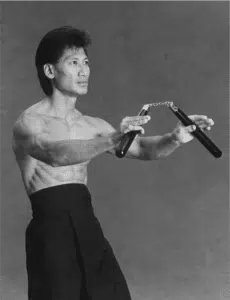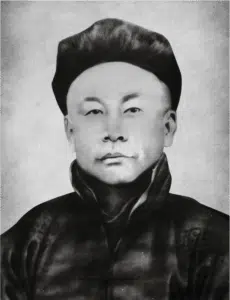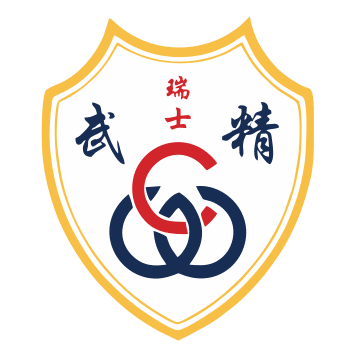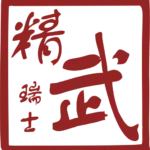Swiss Elite Athletic Association
Grandmaster
KOK YENG CHOW

Kok Yeng Chow left Ipoh in Malaysia on March 28, 1971 to bring Chinese Chin Woo culture to Europe. On a very adventurous journey that lasted months and took him through Central Asia, he finally found his destination in Switzerland. Here he began to earn his living as a dishwasher in a pizzeria in Zurich. He founded his first martial arts school in 1975 in the gymnasium of Rämibühl in Zurich.
An incredible story
Since Kok Yeng Chow has dedicated himself to Chinese martial arts, he has always seen it as his most important duty to pass on the traditional Chinese martial art to Western society. For 40 years he has been practicing Kung Fu on a daily basis and for 50 years he has spent most of his time teaching students. The great popularity of the Chin-Woo school in Switzerland is not least based on the fact that Kok Yeng Chow is constantly expanding his knowledge of martial arts and constantly developing his style. His goal has always been to adapt martial arts to changing social requirements. For example, the Swiss system of Chin Woo Association something for every friend of Chinese martial arts.

Founder of the Swiss Chin-Woo Athletic Association.
KOK YENG CHOW
Kok Yeng Chow was born on July 8, 1950. At the age of seven, he joined the Chin Woo Association in Ipoh and thus came to martial arts.
His parents told him that Kung Fu was an ancient tradition in China and that it was practiced in the Chin Woo Association this tradition is passed on. They also told him stories of Huò Yuánjia and other great fighters. At that time, the films about the adventures of Wong Fei Hung with Kwan Tak Hing in the lead role were shown in the cinemas and Chow was often taken away by his father. So it didn't take long until Kok Yeng Chow also wanted to emulate his role models and joined the Chin Woo Association.
In an interview, he mentioned his first meeting with his teachers at Chin Woo School. Master Fu Ho Chau Kow and Master Too Keng Go were busy teaching, while Master Chan Yew Meng, sitting on a chair and drinking tea, explained techniques. Chow was impressed by the discipline that prevailed in this school. For Chow, a very active child by nature, this discipline was very important for his growing up. Between his Sifu Chan Yew Meng and he began to develop a father-son relationship that lasted until Chan's death in 1997. It was also Chan Yew Meng who gave Chow permission to set up a Chin Woo branch in Switzerland after a three-year probationary period.
Chan Yew Meng was a very traditional Chinese. Chinese Philosophy and the way of thinking was taught by him as well as, cultural customs. Kok Yeng Chow thanked for all the skills and wisdom he has been given with his loyalty to his masters and the Chin Woo Association. He also places this expectation of loyalty on his students and instructors today. The training of the dragon and lion dance also took up a large part of his training time. When asked what his favorite memories of his time in Ipoh were, Chow once replied that it was always the time to enjoy a meal together after a successful performance. All participants were always invited to this big party and it was a great honor to be able to sit next to his Sifu for once.
Like all Chin Woo students, he began his training with the Tan Tui basic forms, which are still part of the necessary basic training for him today. These twelve Tan Tui forms are therefore tested again and again in the first tests. After the Tan Tui forms, he learned the remaining Chin Woo basic forms. His Sifu also taught him different forms from the south and north and different weapon forms that are not part of the basic Chin Woo forms.
Another special feature was that Chow got the opportunity to learn the Poket fighting style in Chin Woo Kampar. A technique that is derived from the Choy Lee Futt style, focuses on 17 techniques and is very effective for combat. Since this style requires strong arm muscles and a good and strongly developed character, it is only taught in the upper ranks in the Swiss Chin Woo Association. This poket style became Chow's favorite discipline and made him famous within Chin Woo Ipoh. During his time at the school in Ipoh, Kok Yeng Chow participated in many competitions in and outside of Ipoh. He acquired many new techniques and combined them with the existing ones. A skill that later led to him being able to Wing Chun techniques with the techniques of poket and thus created a system that makes bridging the distances within the fight extremely efficient.
Chow left Ipoh in Malaysia on March 28, 1971 to bring Chinese Chin Woo culture to Europe. On a very adventurous journey that lasted months and took him through Central Asia, he finally found his destination in Switzerland. There he began to earn his living as a dishwasher in a pizzeria in Zurich. He founded his first martial arts school in 1975 in the gymnasium of Rämibühl in Zurich. Three years later, he taught in his own training room in Oerlikon. In 1989 there was another move to Altstetten on Flüelastrasse and finally in 1992 to the current location, Badenerstrasse 569 Chin Woo Kung Fu . For 68 years, Kok Yeng Chow has been practicing Kung Fu on a daily training basis, and for 50 years he has spent most of his time teaching students.
Since Kok Yeng Chow is the Chinese martial arts , he has always seen it as his most important duty to pass on the traditional Chinese martial art to Western society. For 65 years he has been practicing Kung Fu on a daily training basis and for 50 years he has spent most of his time teaching students. The great popularity of the Chin Woo school in Switzerland is based not least on the fact that Kok Yeng Chow is constantly expanding his knowledge of martial arts and constantly developing his style. His goal has always been to adapt martial arts to changing social requirements. Thus, the system of the Swiss Chin Woo Association contains something for every friend of Chinese martial arts.
Thanks to the recommendations of the Chinese Ambassador to Switzerland, Chow Kok Yeng, accompanied by Herm Xue Yi, the former head coach of the Chinese Wushu national team, the chief martial arts trainer of the famous Shaolin Temple in Henan, Grandmaster Shi Yan Wen. In April 1996, Chow Kok Yeng was able to visit the monastery with his students and train there with the monks. This first trip was a great success and so the trips to the North Shaolin Monastery are now one of the regular trips of the Swiss Chin Woo Association. In 2002, there was a cultural exchange between the Shaolin Monastery in Henan and the Chin Woo schools in Switzerland, when Xue Yi came to Switzerland with a monk to teach traditional Shaolin Kung Fu. In return, the Swiss students showed the monk Chin Woo Kung Fu.
Examination system of the Swiss Chin Woo Association.
Chow Kok Yeng has developed a special examination system for the Swiss Chin Woo Association. The goal was to combine the essence of the different martial arts styles into a single system. This system should include the traditional Chin Woo forms, the art of Wing Chun and the irrepressible power of poket. In addition, he added the leg techniques of the northern Shaolin Stiles. In the first six levels of the exam, the student learns the 12 Tan Tui forms, the Siu Nim Tao form of Wing Chun, the first three movements of two-handed Chi Sao, basic leg techniques and the development of power and strength. After reaching the 6th degree of the exam, the student starts with the Chin Woo basic forms. The form Gong Li Quan is the first to be learned Up to the 9th level of the exam, the student learns Jit Quan, the two Wing Chun forms Chum Kiu and Biu Chee, advanced Chi Sao techniques and the combination of leg techniques. By reaching the 15th degree of the exam, the student has learned all poket techniques and the complete wooden puppet form. He is now able to combine these techniques with each other in combat. The learning program of the traditional forms includes Sei Ping Dai Quan, Da Zhan Quan, Sei Lo Kune, Boo and Ba Cha Kune. The handling of weapons is not part of the examination system. In order to get to a higher degree of examination, the pupil has to pass a test. Levels 1 – 9 are represented with examination badges in different colours. In recognition of passing higher-grade exams, the student receives a special T-shirt. The passed exams are entered in the Swiss Chin Woo Martial Arts Pass.

Respect, discipline, perseverance, strength, honesty and fairness are among the most important aspects to learn Chin-Woo Kung-Fu.
Huò Yuánjiǎ
Through the history of China, as well as through its heroic status, legends and myths about events, its Life very difficult to follow.
Huò Yuánjia (霍元甲, 1867; † 1910) is the founder of the Chin Woo Kung Fu Association. The first official Chin Woo school was founded around 1909 in Shanghai, China.

Only those who work themselves and gain the trust of their teacher can practice this martial art properly.
Chan Yew Meng
Chan Yew Meng was a very traditional Chinese. Chinese philosophy and the way of thinking were taught by him as well as cultural customs . Kok Yeng Chow thanks for all the skills and wisdom he has been given with his loyalty to his masters and the Chin Woo Association. Even then, he placed this expectation of loyalty on his students and instructors.
The Three Virtues of Chin Woo
A wise person is characterized by clarity, insight and a deep understanding of the world. Such a person has learned to penetrate the surface of things and see the truth behind the facades. Her life experiences and reflections have taught her to look critically at situations, to balance emotions and not to blindly follow impulses.
A person of wisdom is not only intelligent, but also intelligent. patient and attentive . She listens before she speaks, and observed before judging. Her judgments are based on principles, not prejudices, and she is not easily influenced by outside opinions or fleeting trends.
Deception is rarely successful with a wise person, because he often sees the intentions behind the words and recognizes attempts at manipulation. Her sharp mind combined with a calm heart makes her resistant to deception. Wisdom gives her the ability to distinguish between the essential and the non-essential, making her a beacon of clarity and understanding not only for herself but also for others.
But true wisdom also comes with it Modesty : A wise person knows that he does not know everything – it is precisely this knowledge of his own limits that makes him all the more alert and receptive to new insights.
Kindness is one of the noblest qualities a person can possess. It is characterized by Empathy , Compassion and the ability to help other people with Warmth of heart . A person who is full of goodness often lives in harmony with himself and his environment. She has a deep understanding of the needs and feelings of others and always acts out of an inner drive to promote the well-being of others.
It is often said that a person full of goodness has no worries, but that does not necessarily mean that he or she does not experience challenges in life. Rather, its strength is shown in how it deals with these challenges. People who are filled with kindness tend not to overstate their worries or let them overwhelm them. They consider difficulties with a clear mind and an open heart and look for solutions that benefit everyone involved.
Her composure and their positive charisma have a contagious effect on their fellow human beings. These individuals often find fulfillment in helping others and spreading joy. Their kindness is not just a trait, but a way of life that makes them want to make the world a little bit better. And perhaps this is precisely the secret of their apparent carefreeness: they see life as a space of opportunity and see every challenge as an opportunity to unfold its goodness.
Courage: A person of courage is not afraid to take risks or face challenges. She shows steadfastness in difficult times, acts decisively and does not allow herself to be paralyzed by uncertainties or fear. Courage does not mean the absence of fear, but rather to act in spite of this fear. It is the ability to withstand internal doubts or external obstacles and to make decisions that may sometimes seem unpleasant or risky.
Courageous people stand up for their beliefs even when faced with headwinds, and they are willing to take responsibility even when the outcome is uncertain. This trait manifests itself in various forms – whether it is physical courage, which is visible in dangerous situations, or moral courage, which consists of standing up for what is right, even when it is unpopular.
Living with courage means facing challenges and growing from them. It is the basis for progress and personal growth, because without courage no change would be possible.
瑞士精武体育會 • 霍元甲
Tianjin is home to the world-famous museum, which serves as a memorial to master craftsmen. Huo Yuan Jia was built.
Founder Huo Yuan Jia was a freedom fighter! He supported the poor and sick by treating them medically. Thanks to his mysterious medical knowledge of medicinal herb mixtures, he was able to alleviate or even cure diseases and physical ailments. He gave his patients new hope and had them train in his Kung Fu school until they were fit again. The training increased self-esteem and the students felt safer, stronger and healthier again after a short training period. Health, well-being and physical fitness have always been very important to Huo Yuan Jia.
In this region, Master Huo Yuan Jia was a hero. Thousands honored him and were able to benefit from his knowledge. He taught the philosophy of Chin Woo by performing kung fu shows in public places. This increased his popularity and people came from far and wide to marvel at his students demonstrating Kung Fu.

